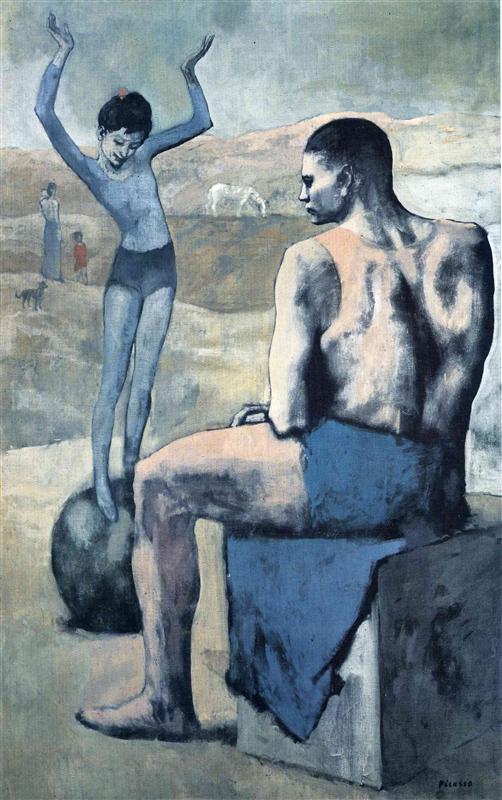The canvas was written in 1907 and marked a new creative stage in the life of Picasso – cubism. The story of the creation of the painting says that the plot was inspired by the Avignon quarter in Barcelona, in which the brothel was located. While conceiving the work, the artist made several sketches, the main ones of which are a seductive scene in a brothel, but in the process of work he stopped at performing five nude figures and a still life.
This picture exploded the idea of painting in the common sense of the word. Shocked the public who knew Picasso, and who again managed to achieve a stunning effect through innovation. Here, the organic integrity of the human body and its proportions are denied. The images create the effect of three-dimensionality, and the edges, wedges, corners are shaded in such a way that they represent a picture of a certain solidified space, or transparent bodies, and all this is integral, continuous, streamlined …
The master presented to the audience some monsters with masks instead of faces, barely indicated by gender, frightening creatures of the wild, aggressive eroticism, and exciting expression.
The depicted figures are made in different ways and unusual. On the left, the silhouette has something in common with Assyrian and Egyptian reliefs. The female figures in the central part of the canvas are the paintings of the Romanesque temples of Catalonia, with its inherent mystical lyricism. The faces of the figures on the right are reminiscent of African faces. They seem to possess the knowledge of an eerie, magical ritual.
This fact has its own background, because in 1907 an exhibition was held in Paris dedicated to the culture and life of the peoples of Africa. In his work, Picasso recreated the seen ritual masks of Africans in a new way. In the picture there are mysterious creatures frightening the viewer, which fascinate with their immobility. The master created gloomy and mysterious images that suppress thoughts, instincts and feelings, dominate the viewer. It is from here that the “demonism” in the work of the master comes, about which critics talk so much.
Picasso set himself the task of transferring a volumetric shape to a plane, dismembering it into geometric components, as well as solving the search for expressive deformation, expressing grotesque. He manages to saturate the figures with powerful force and eerie aggression.
The painting contains ocher-pink colors and a bluish tone, as a tribute to the already departed “blue and pink” periods in the artist’s work. The angularly sharp elements of the pattern are reminiscent of the Matisse technique. The location, the grouping of figures is most likely from Cézanne, who inspired many cubist artists with his “Bathers”.
Undoubtedly, the painting has a traditional and at the same time innovative beginning. The interweaving of these two quintessences bears the encryption and allegorical nature of the plot. Here barbarian origins, spontaneous, with chaotic inclusions dominate, when the whole history was woven from myths and legends.
Parisian bohemia accepted the “Maidens” not unambiguously. A. Matisse saw in this work the key to the new development of the fine arts, was jealous, and therefore moved to those who were against the picture. Georges Braque, on the other hand, admired the image so much that she inspired him to create her Nude.
The history of painting the canvas is also closely connected with the personal crisis of the relationship between the master and Fernanda Olivier – they have been together for nine years, Picasso begins to feel weary of this relationship, and decides to test his feelings with alternative connections.
There is no plot in the picture, it is filled with a kind of mystical meaning. Her language is unusual and new, and the manner of performance itself became a significant event in the visual arts of that time.
The painting owes its name to Anre Salmon, the poet and close friend of Picasso.
Year of painting: 1907.
Dimensions of the painting: 243.9 x 233.7 cm.
Material: canvas.
Writing technique: oil.
Genre: nude.
Style: cubism.
Gallery: Museum of Modern Art, New York, USA.



